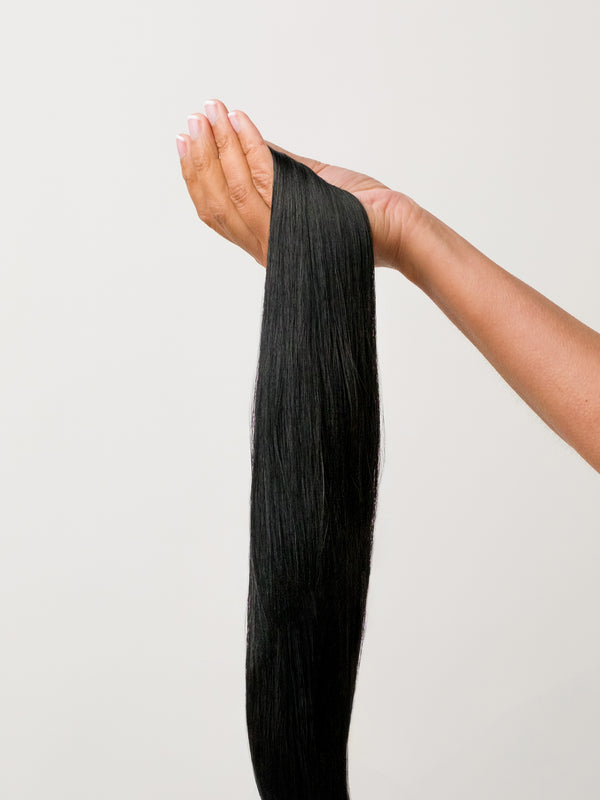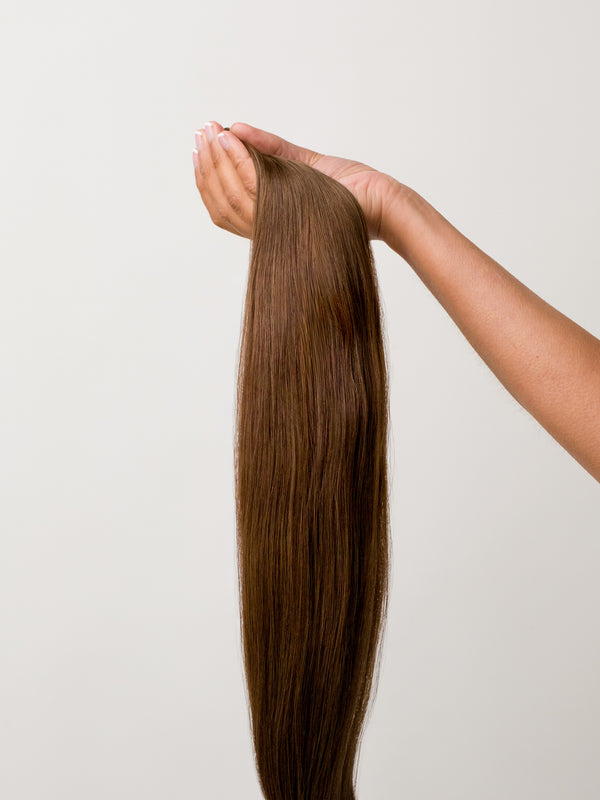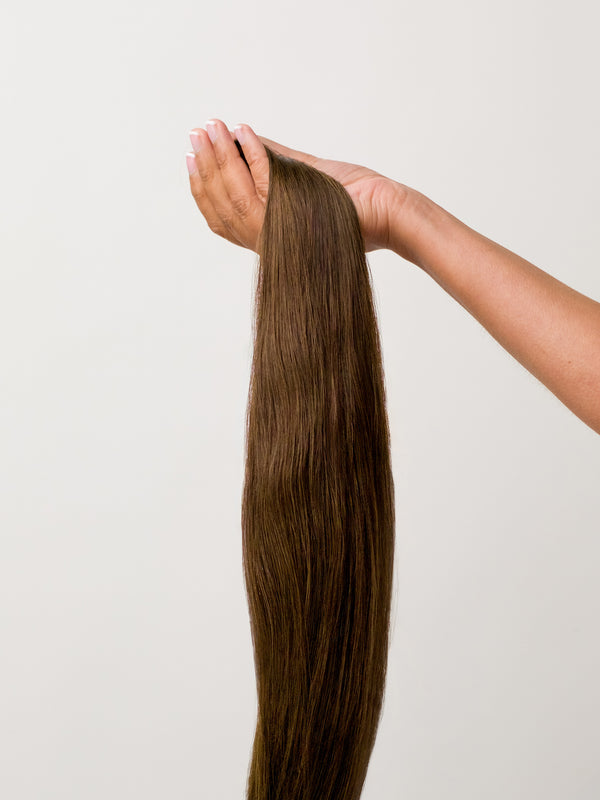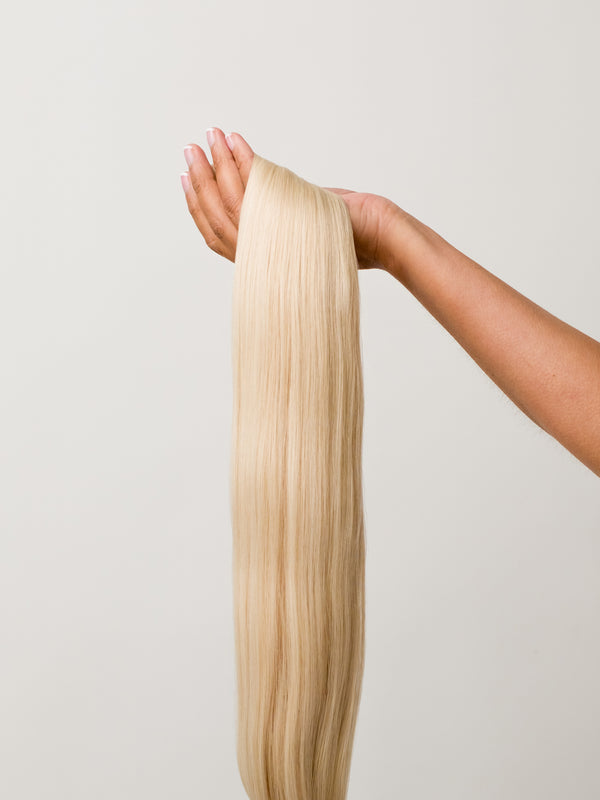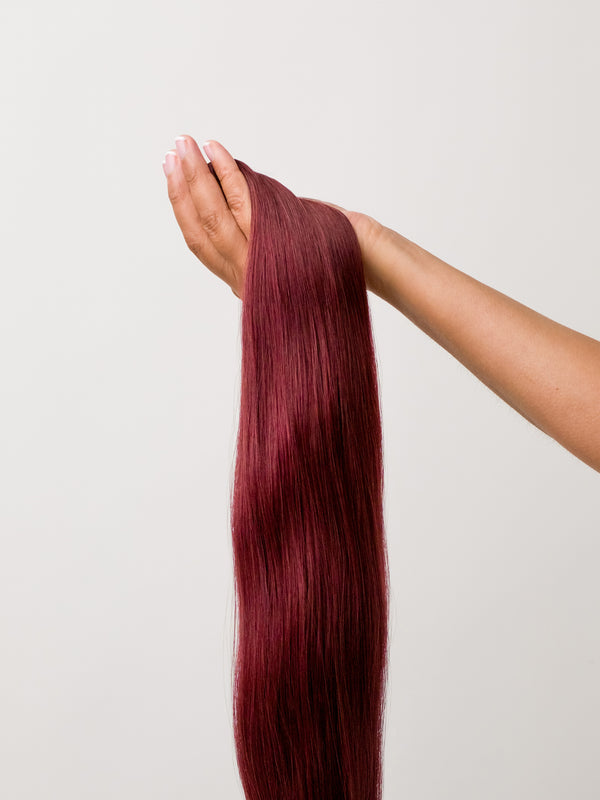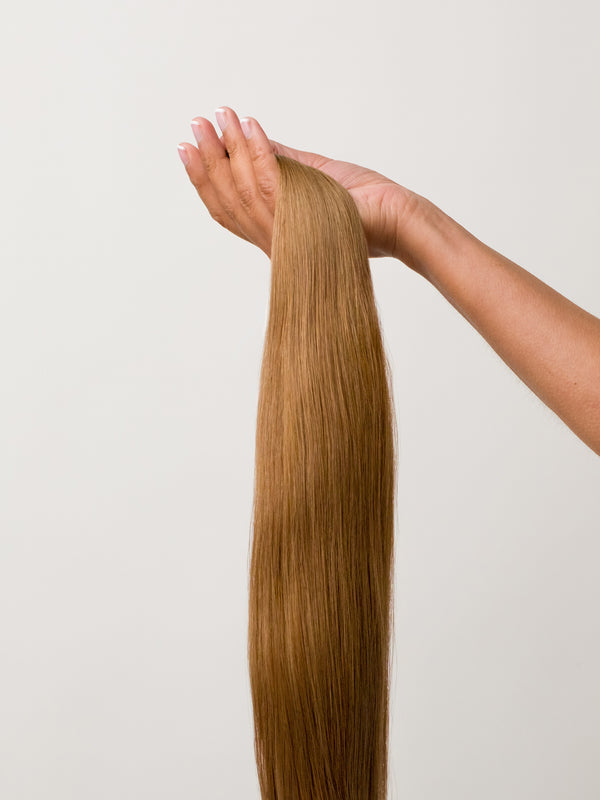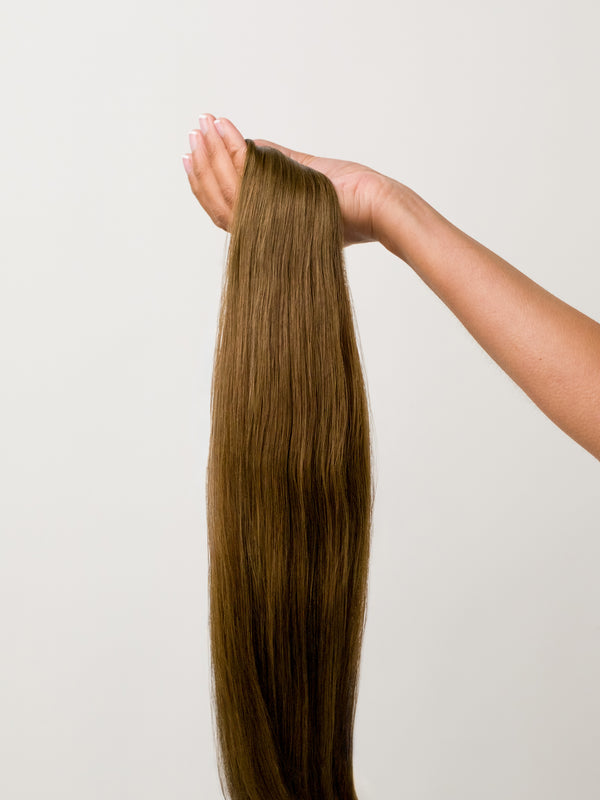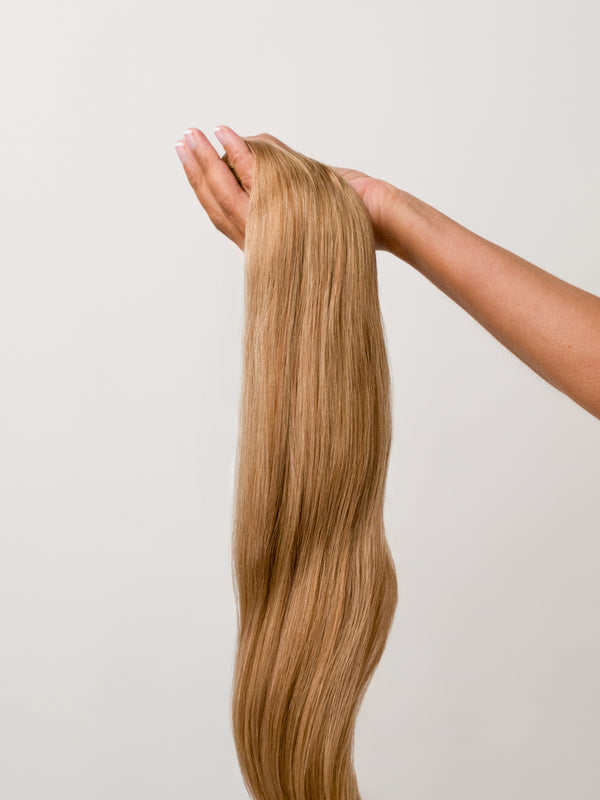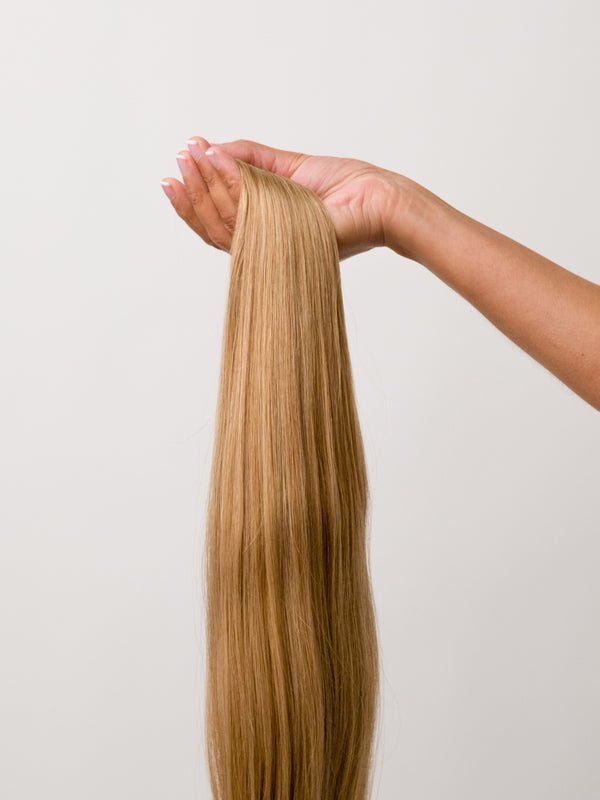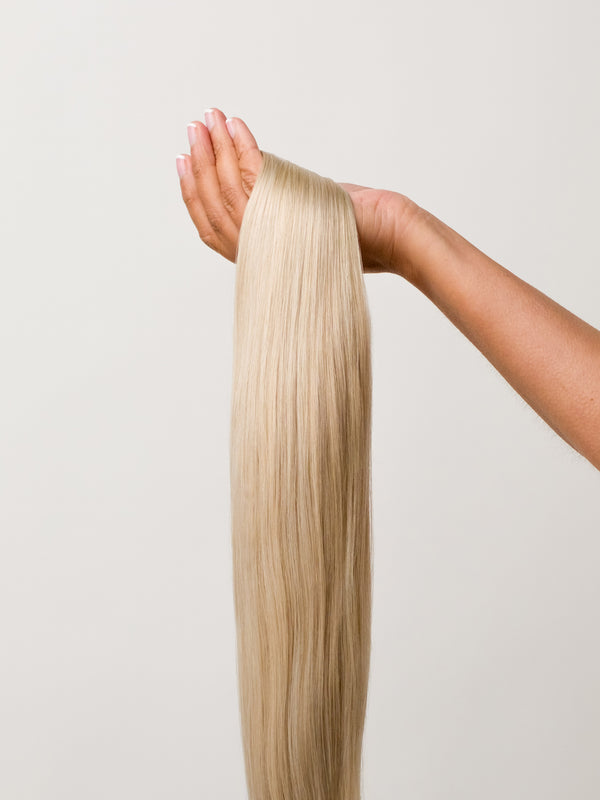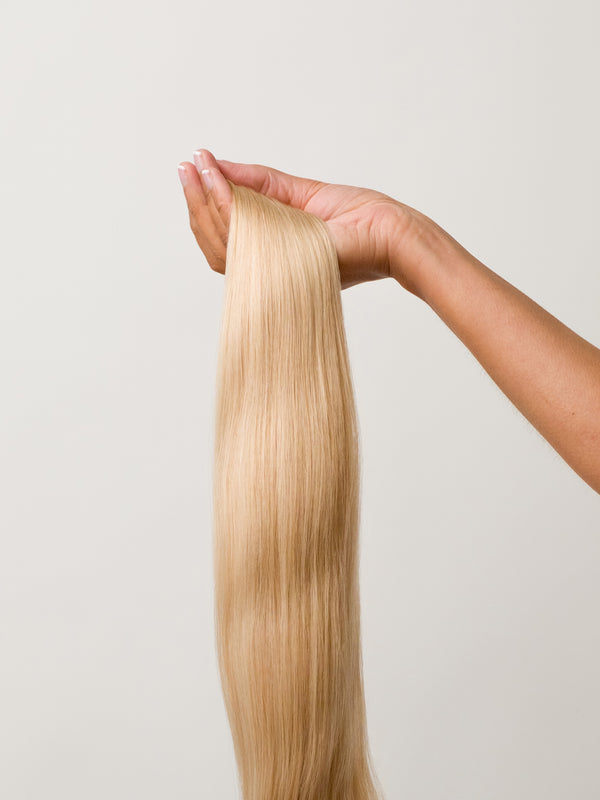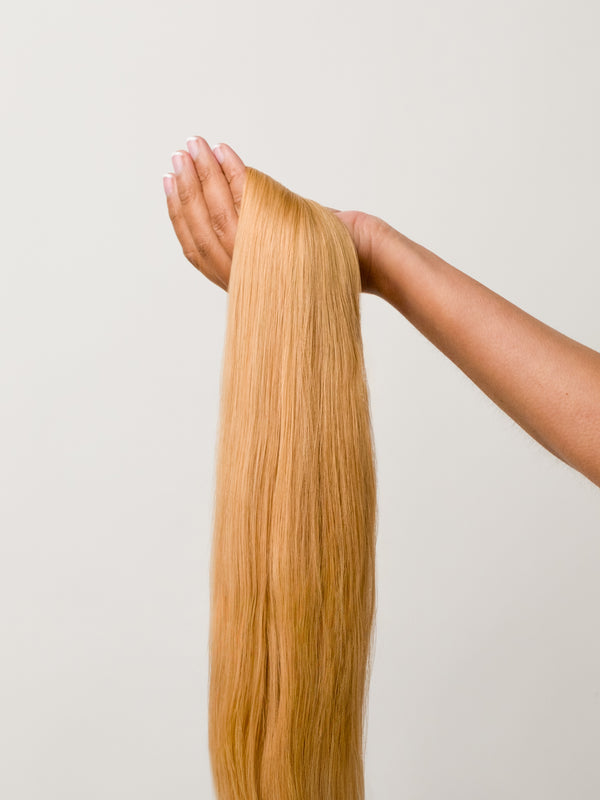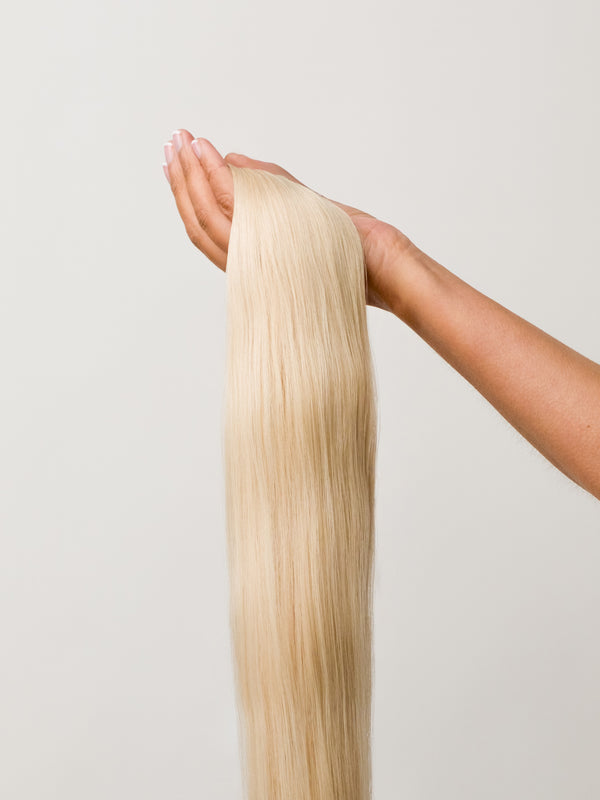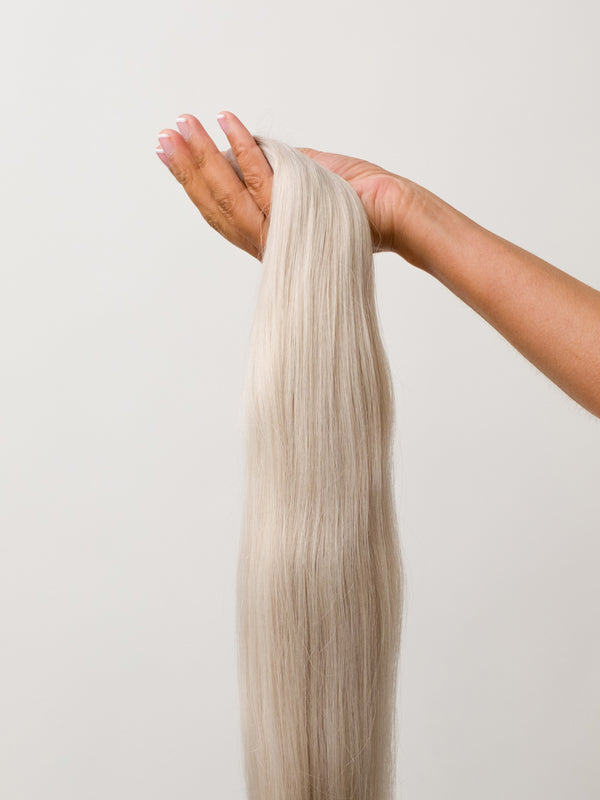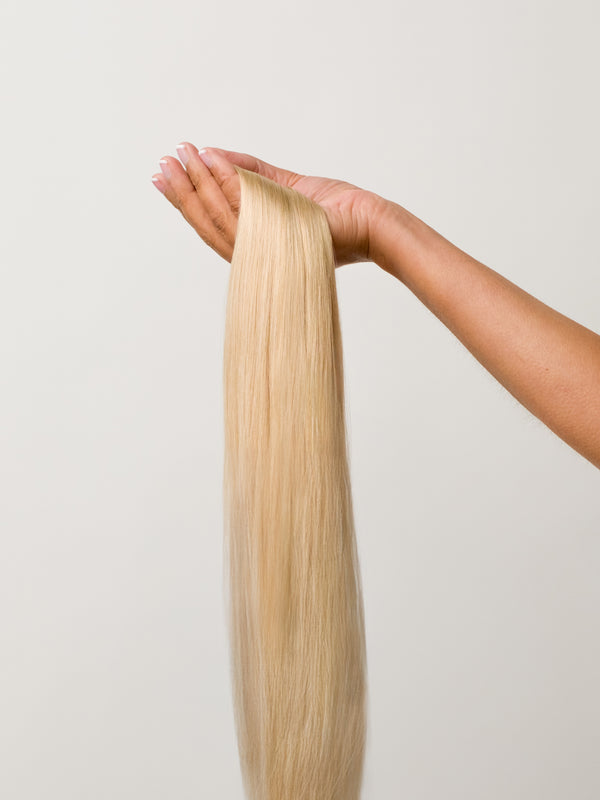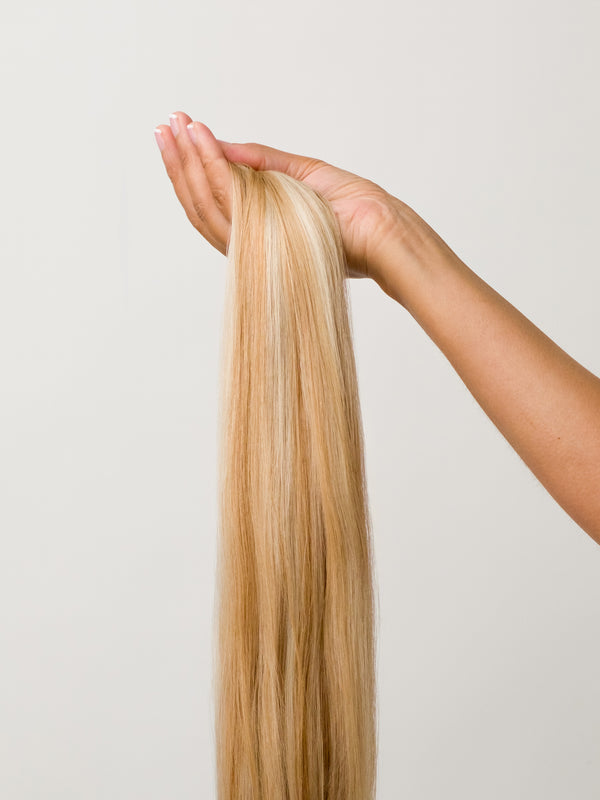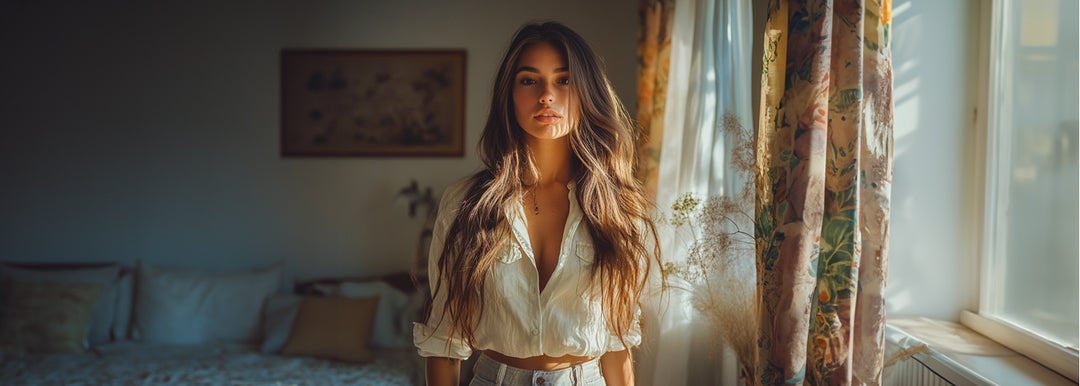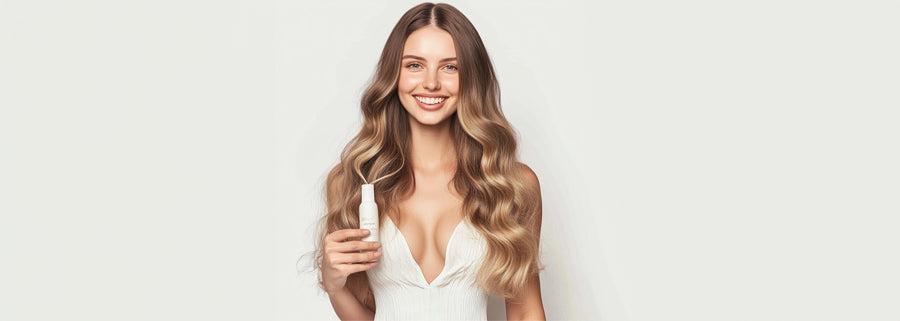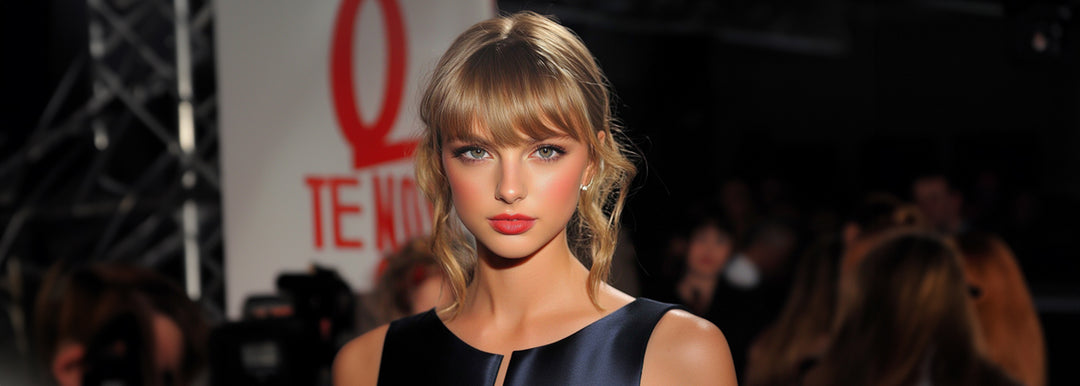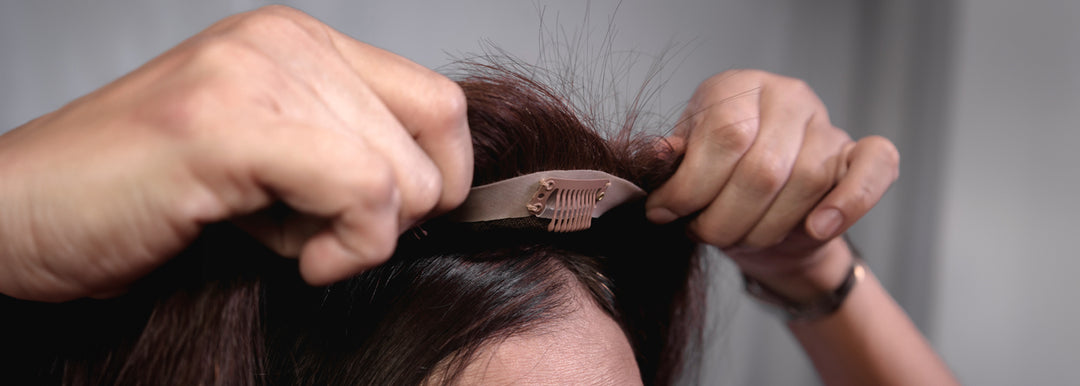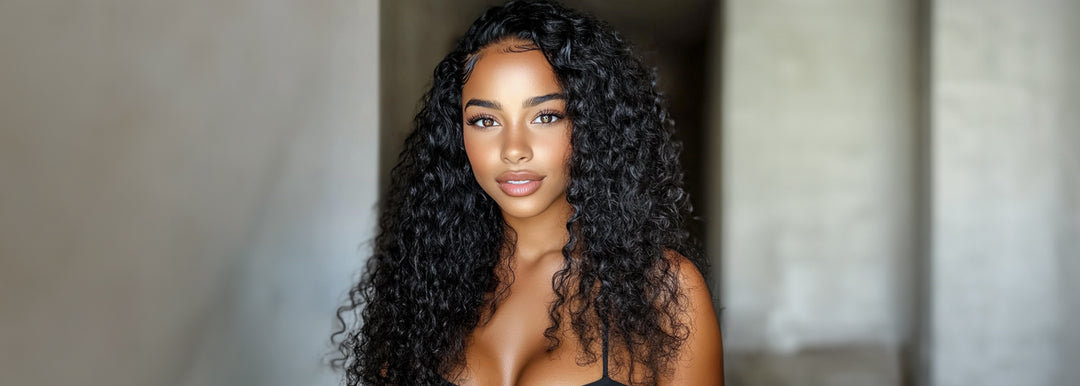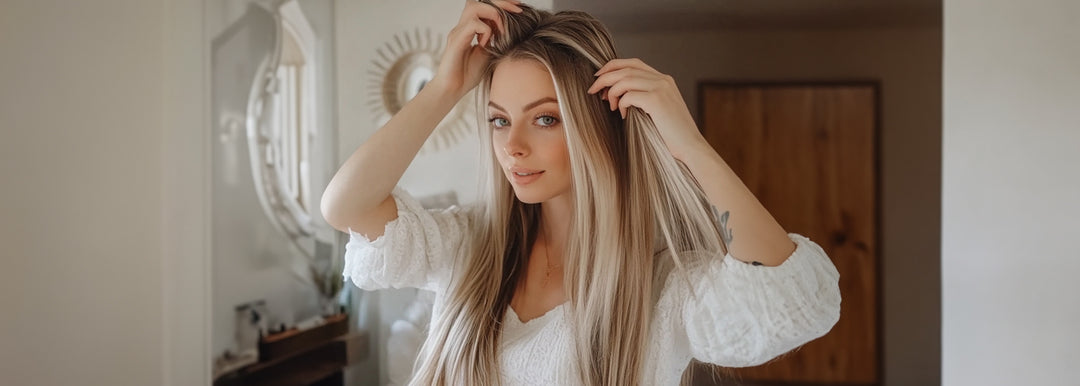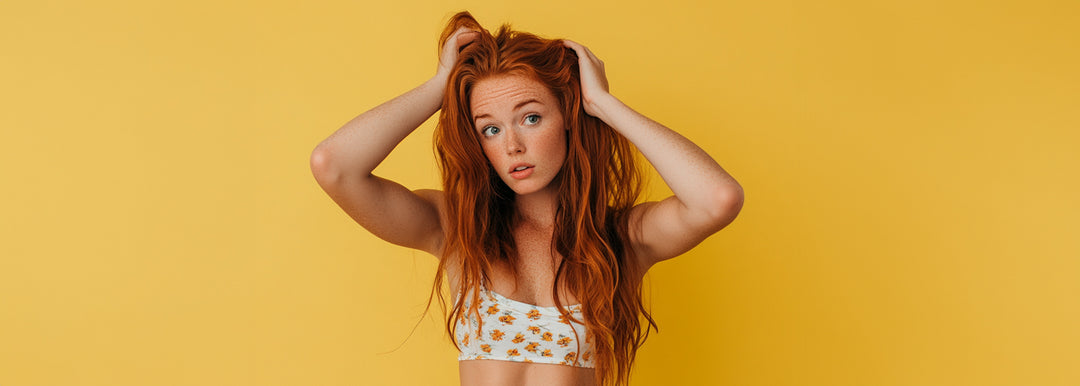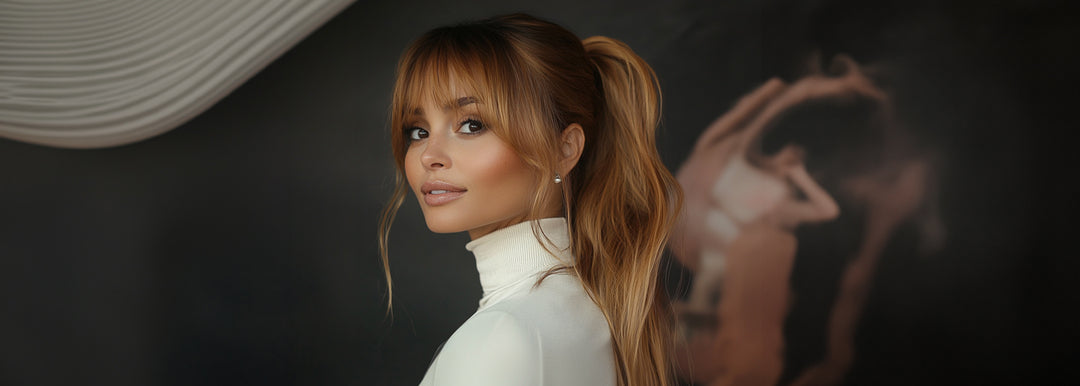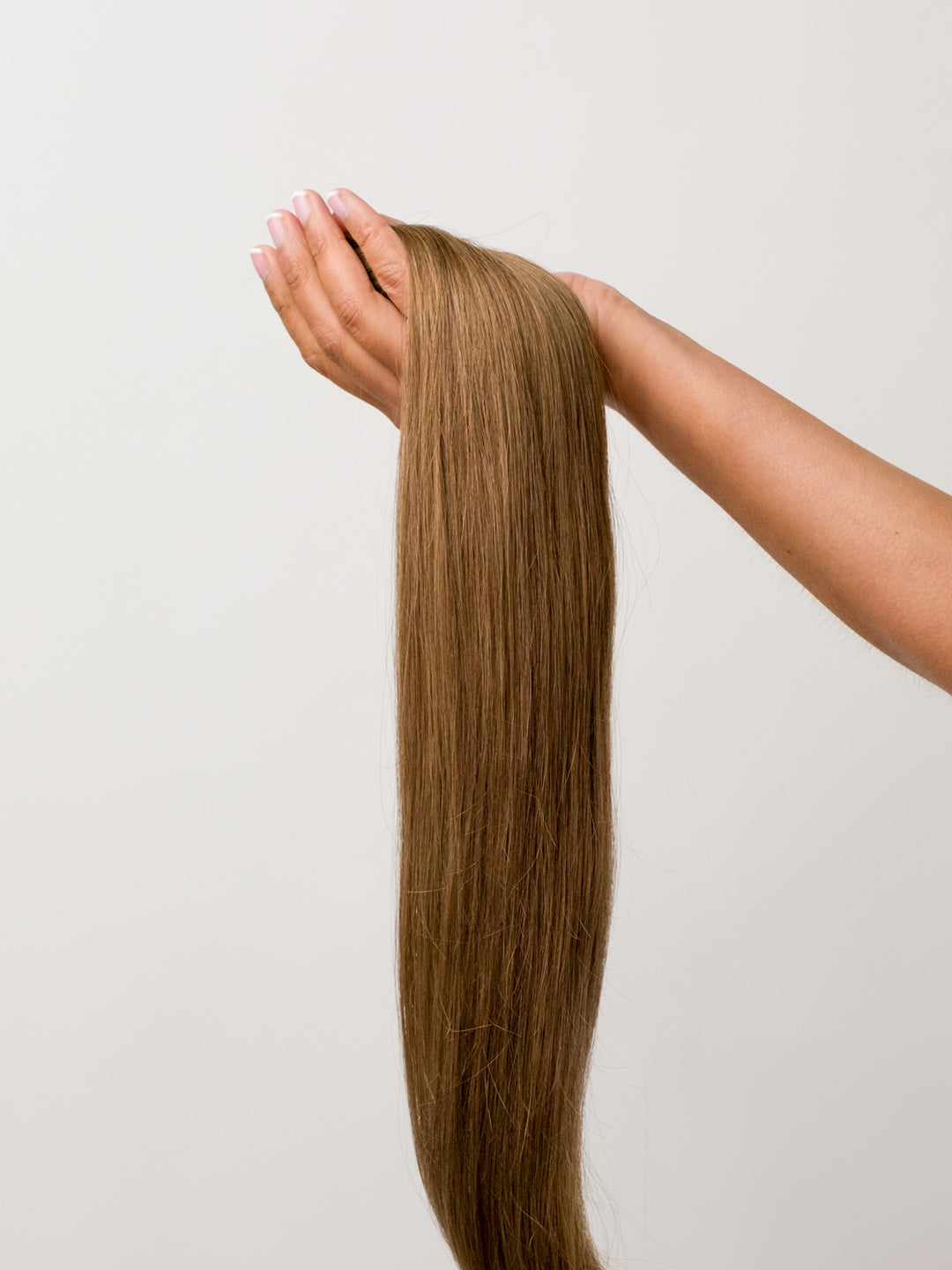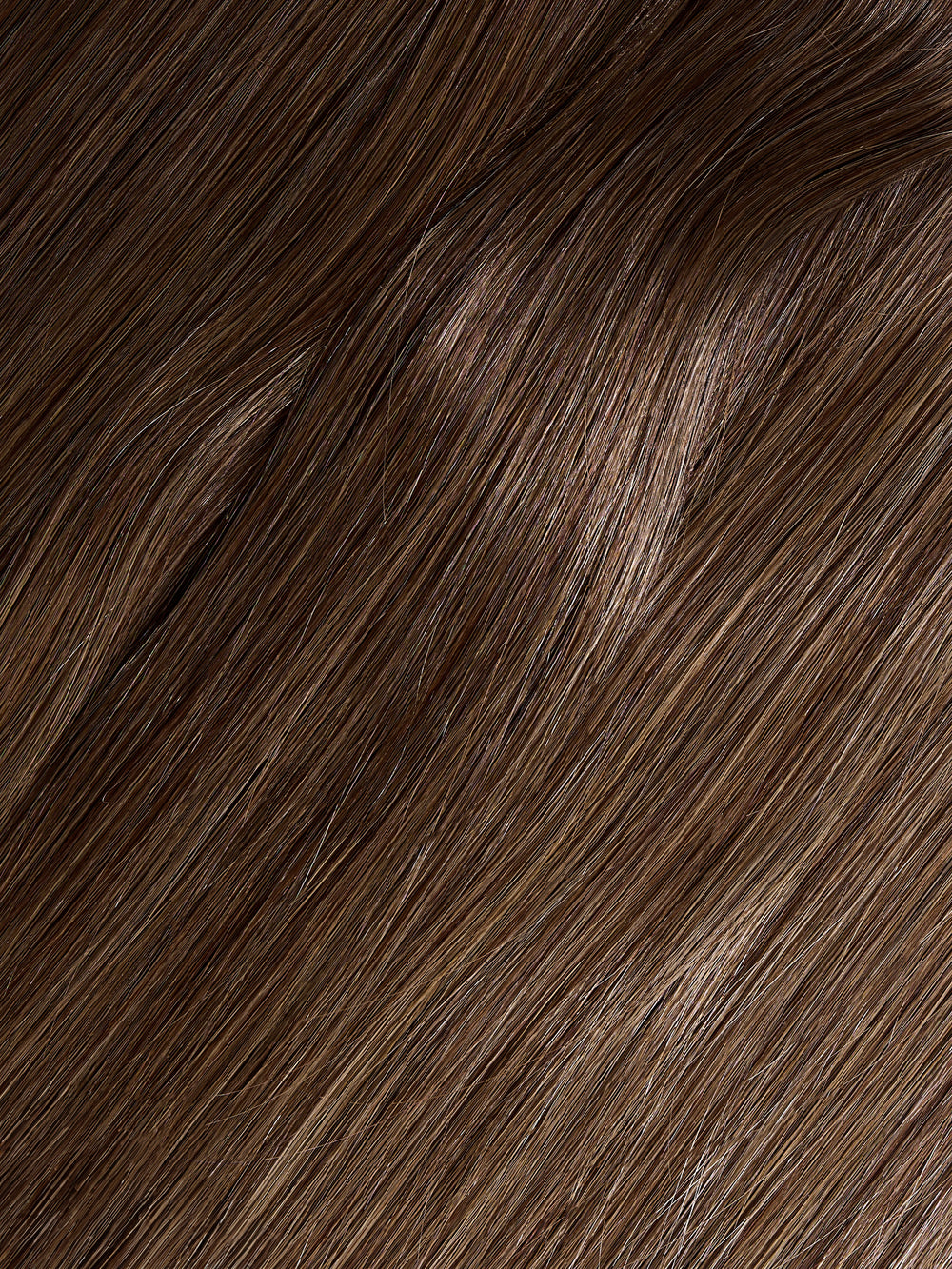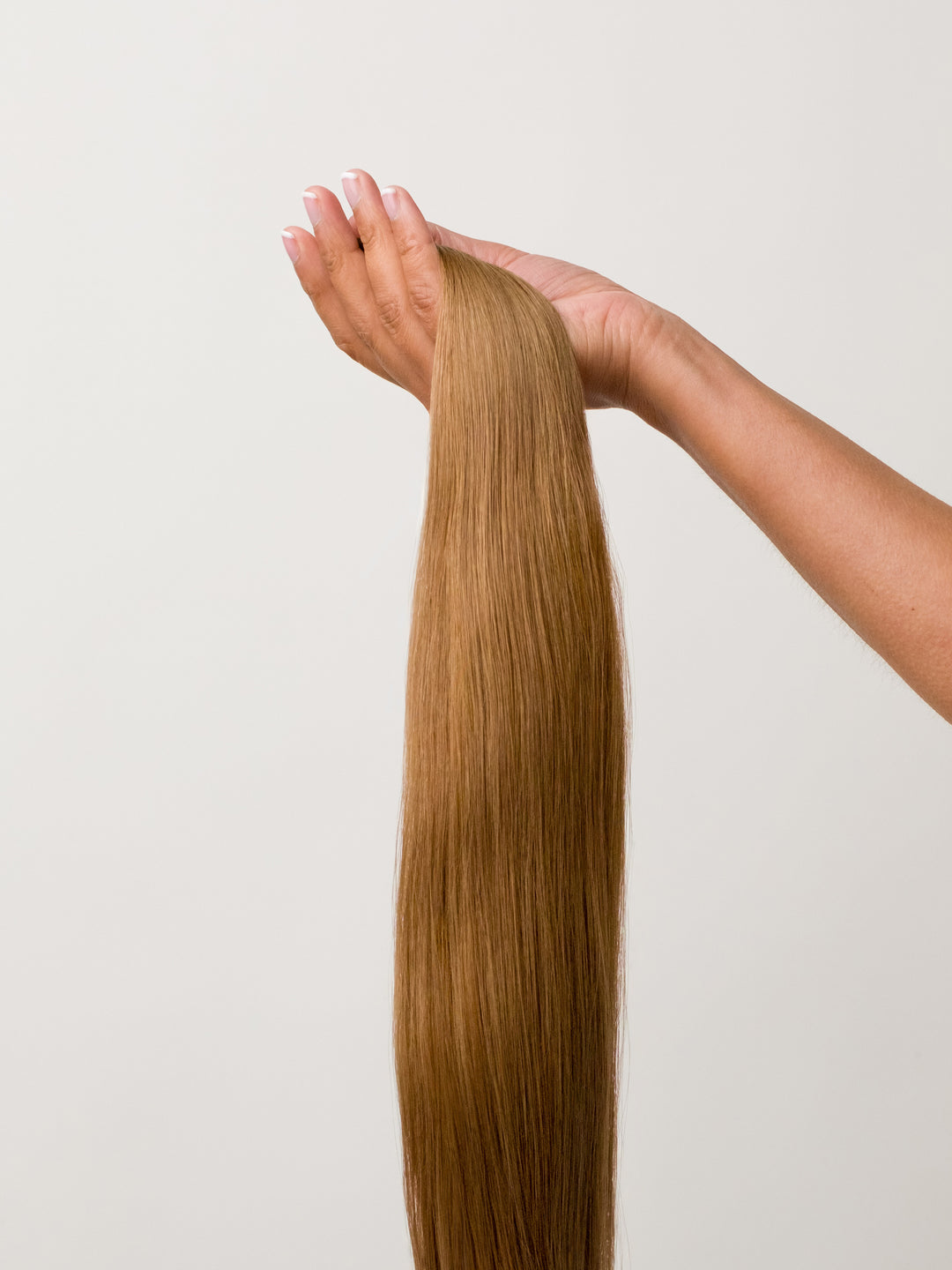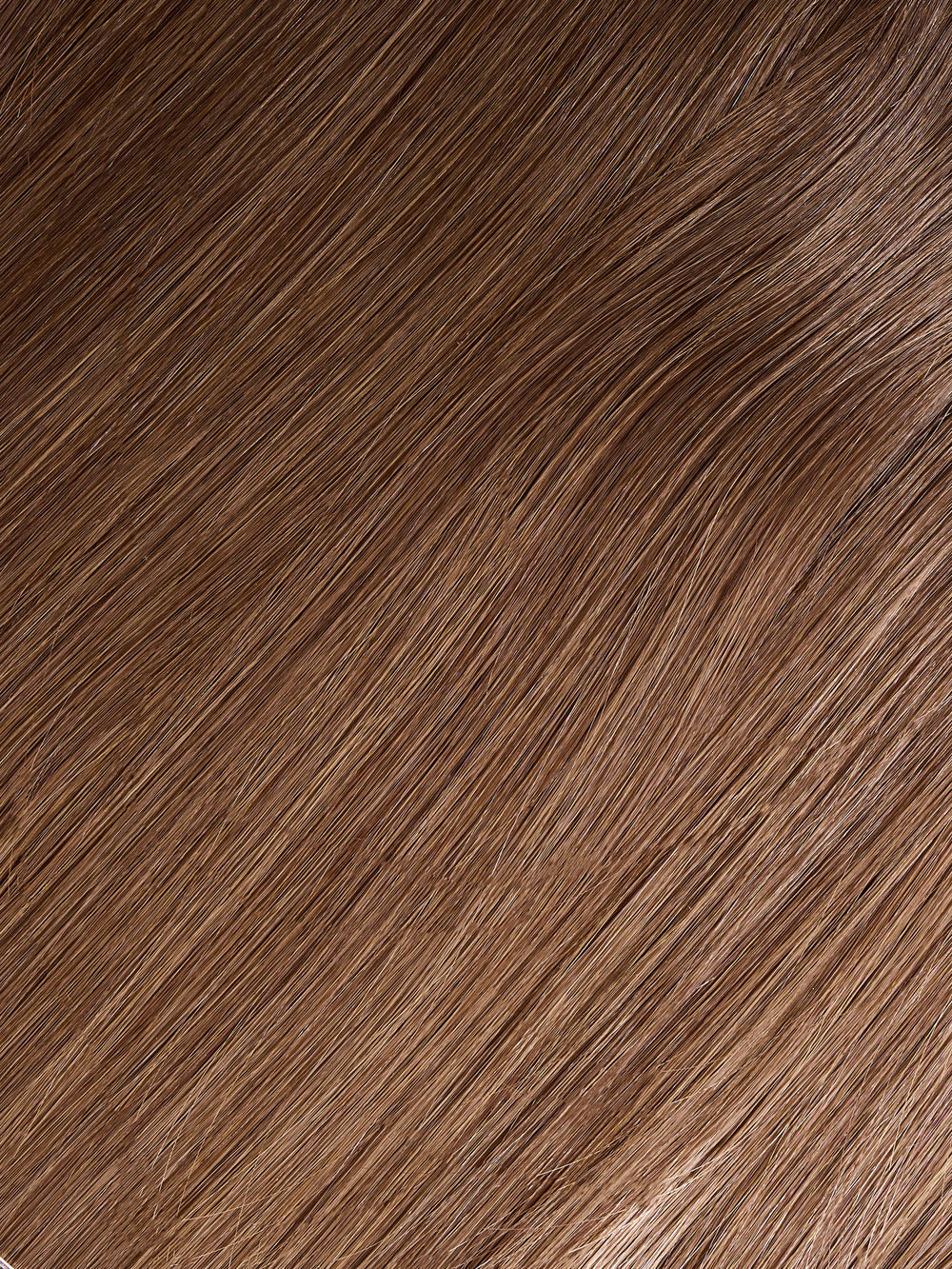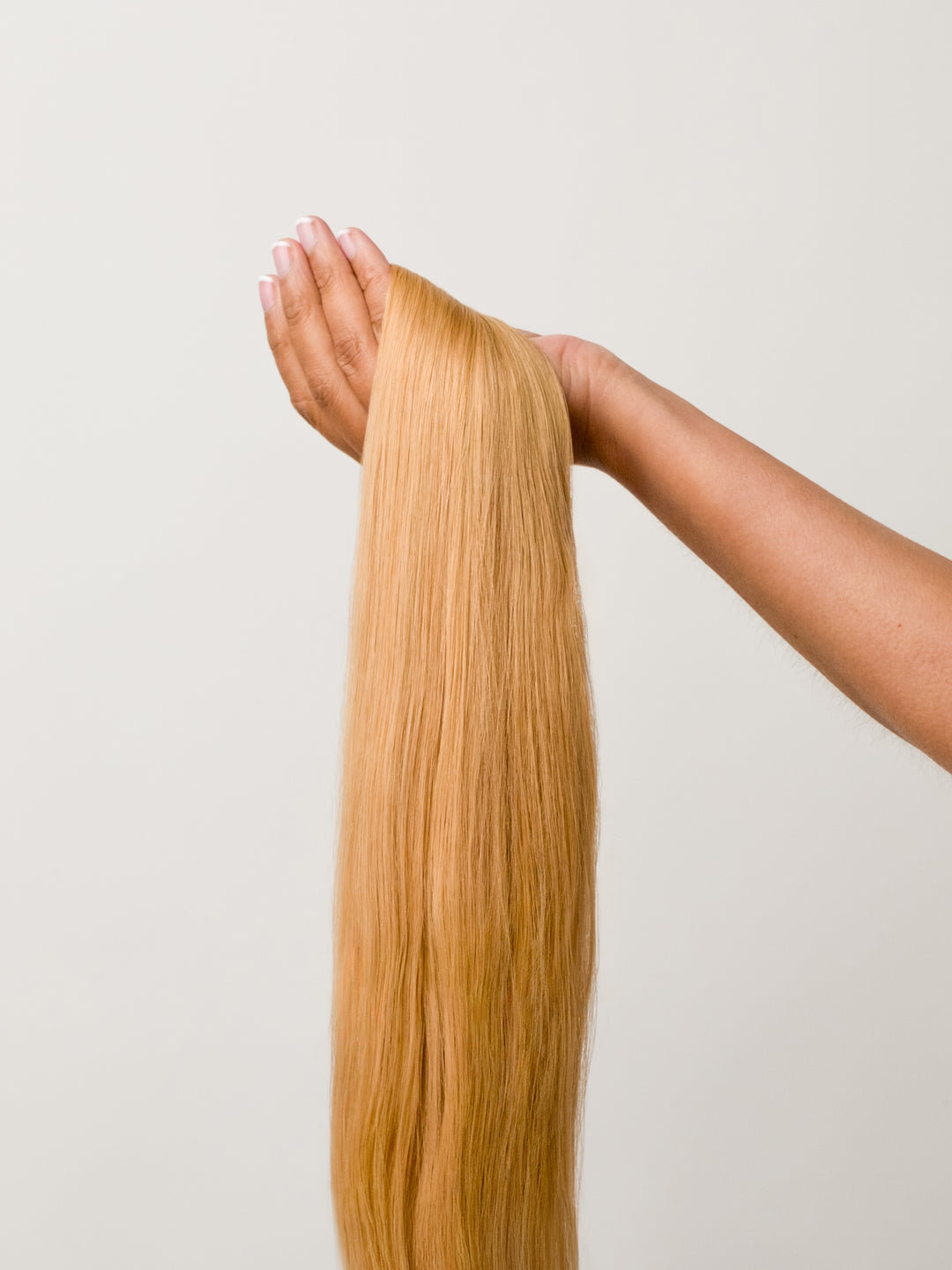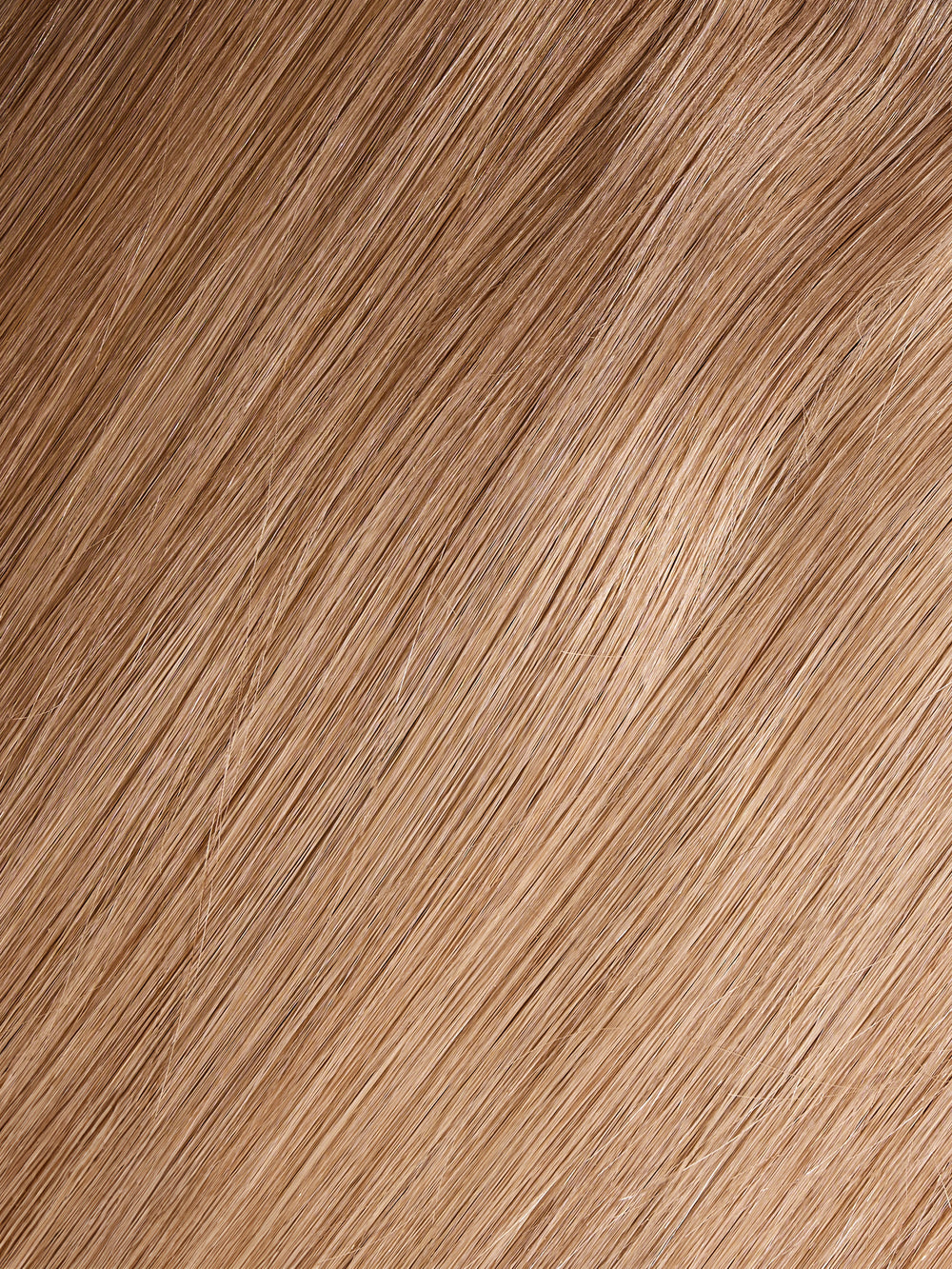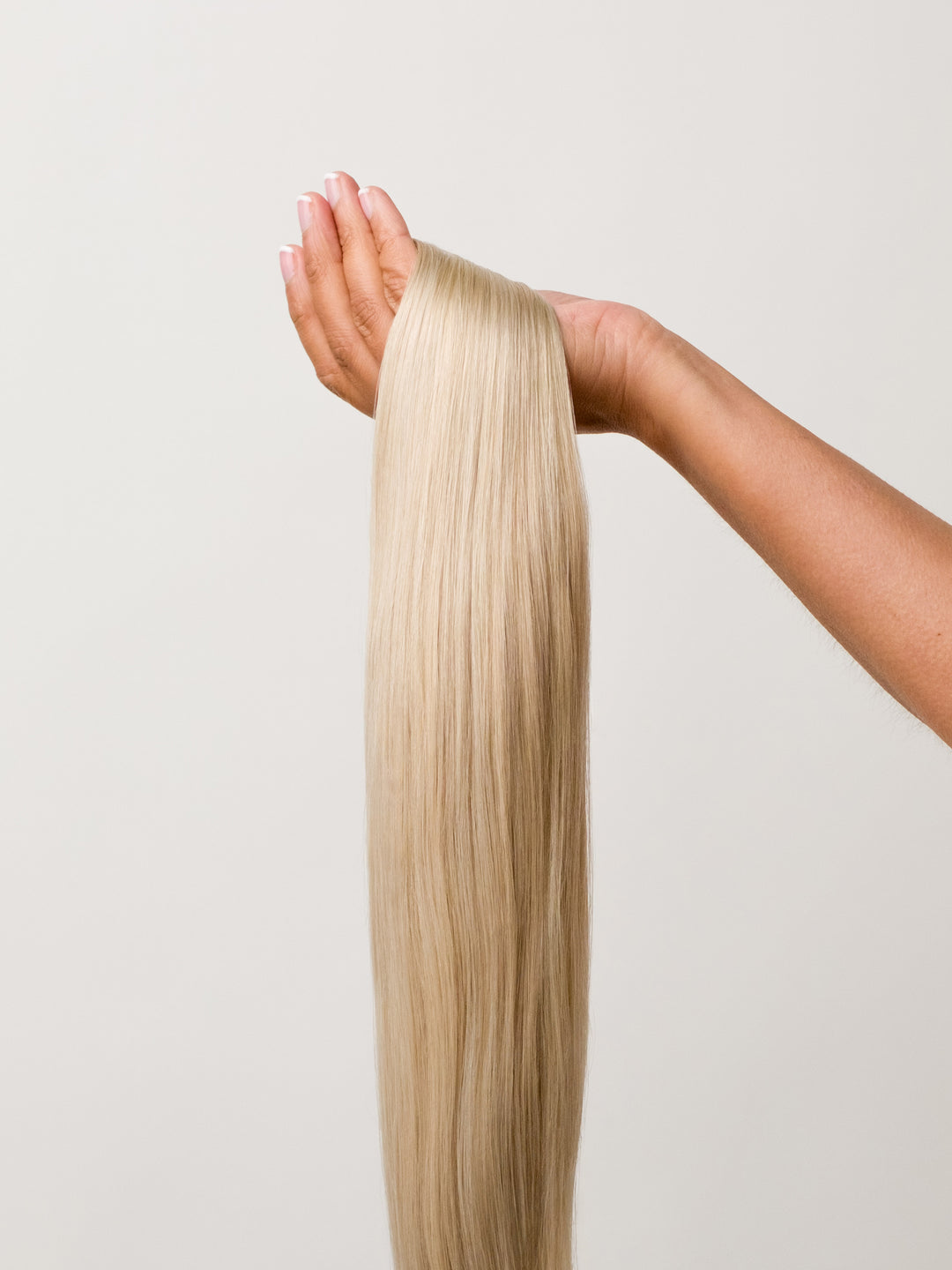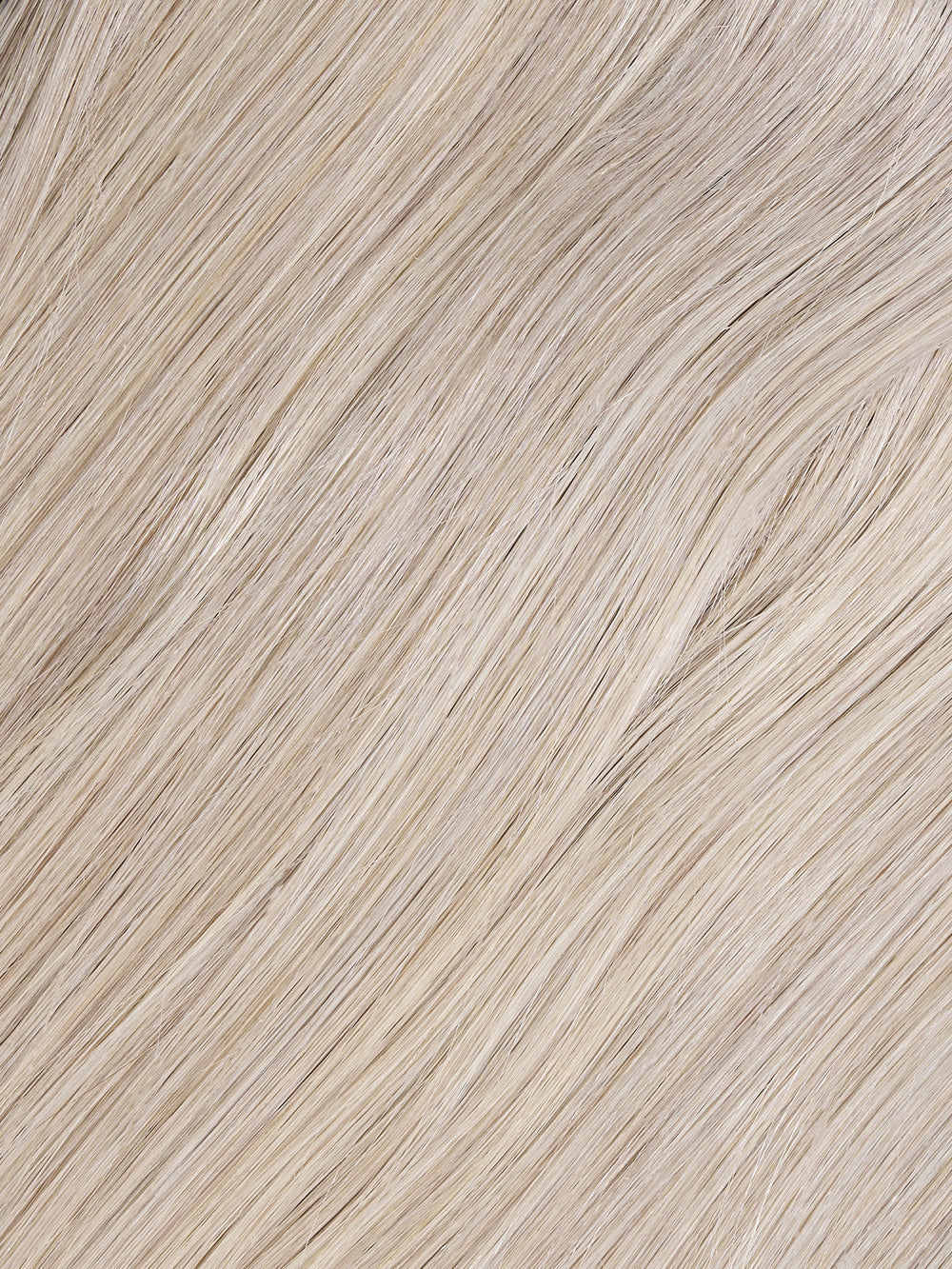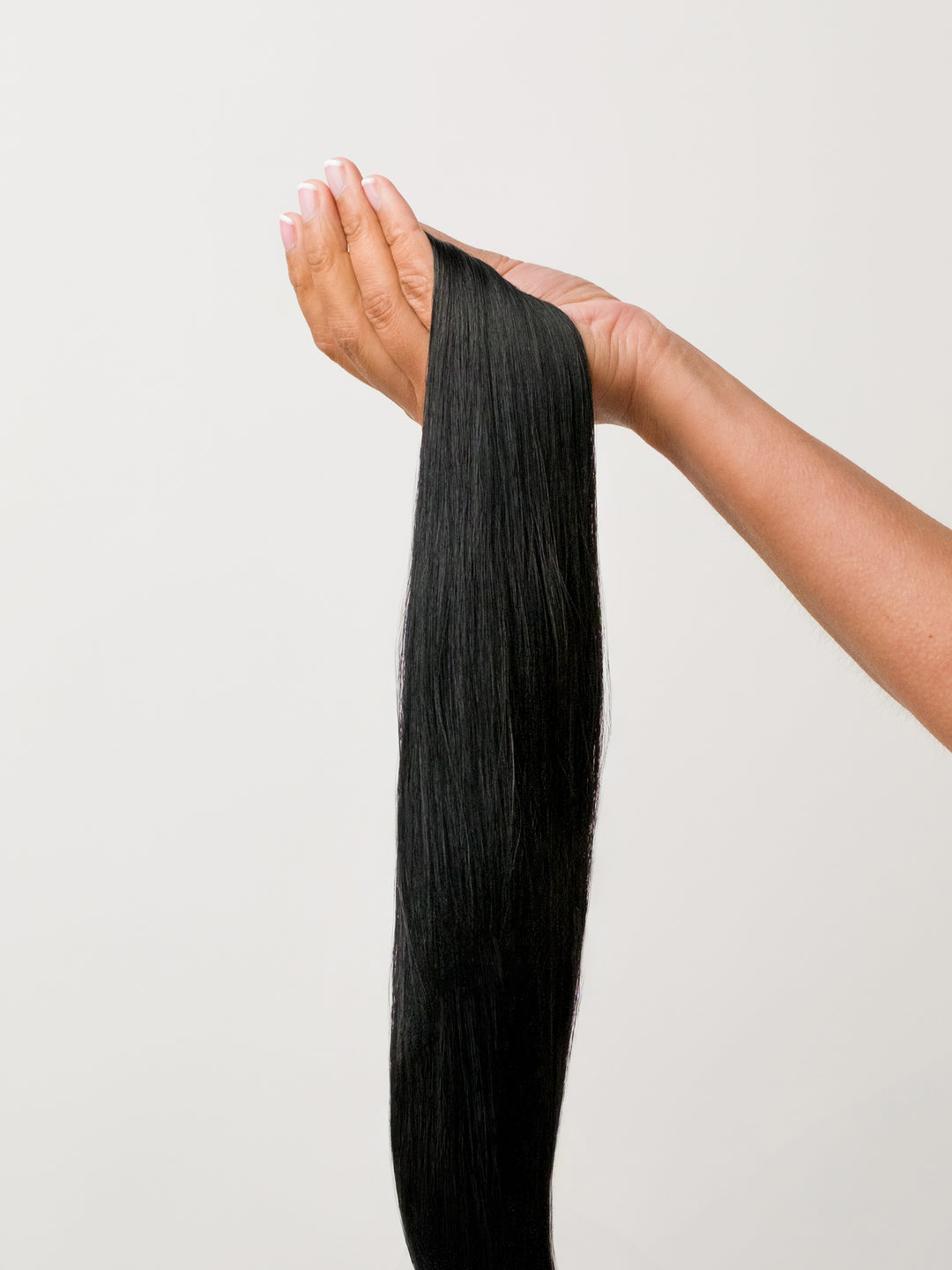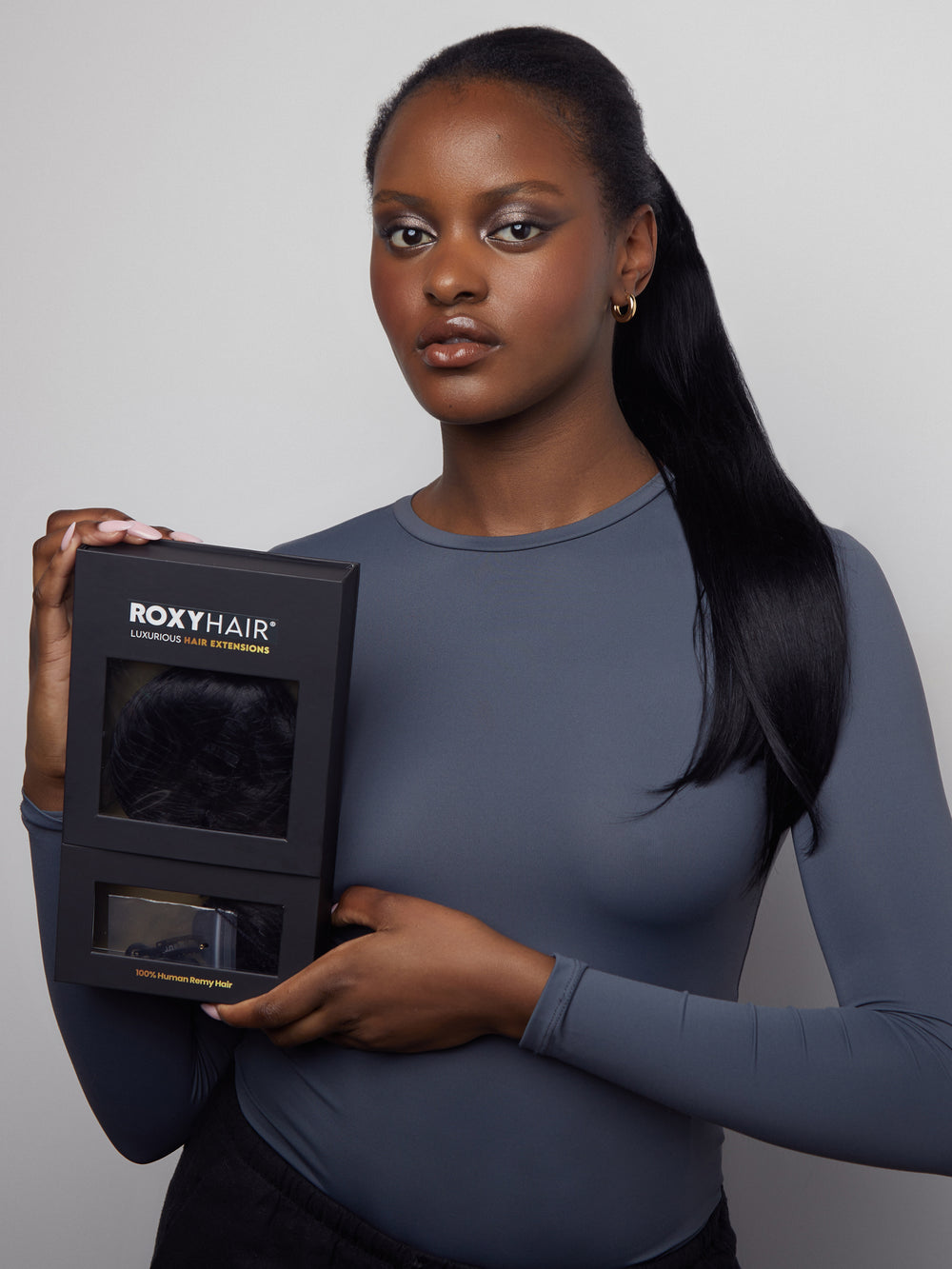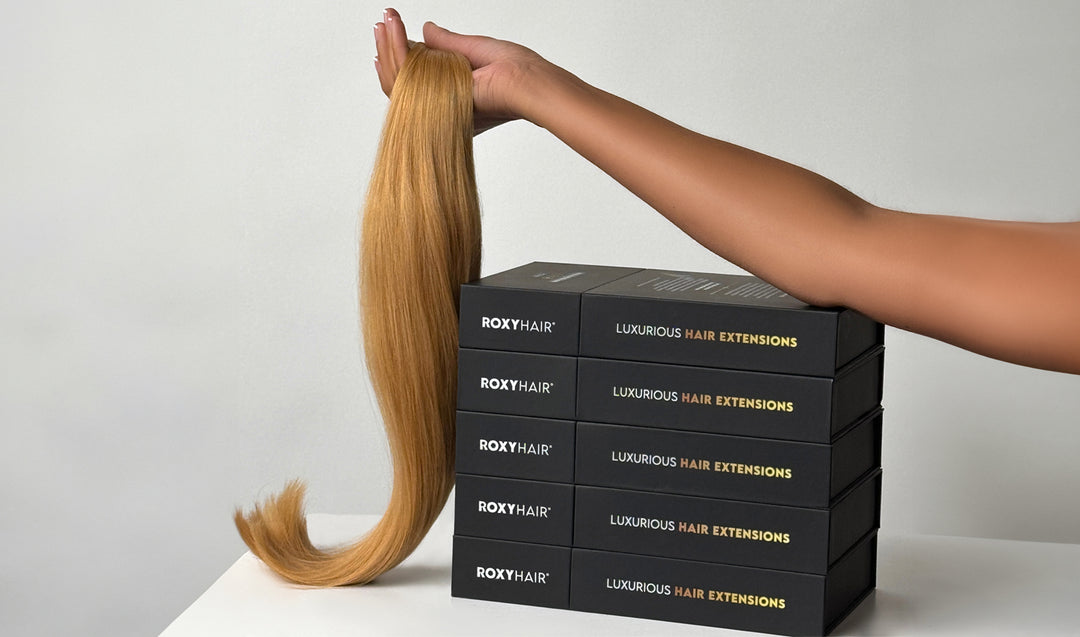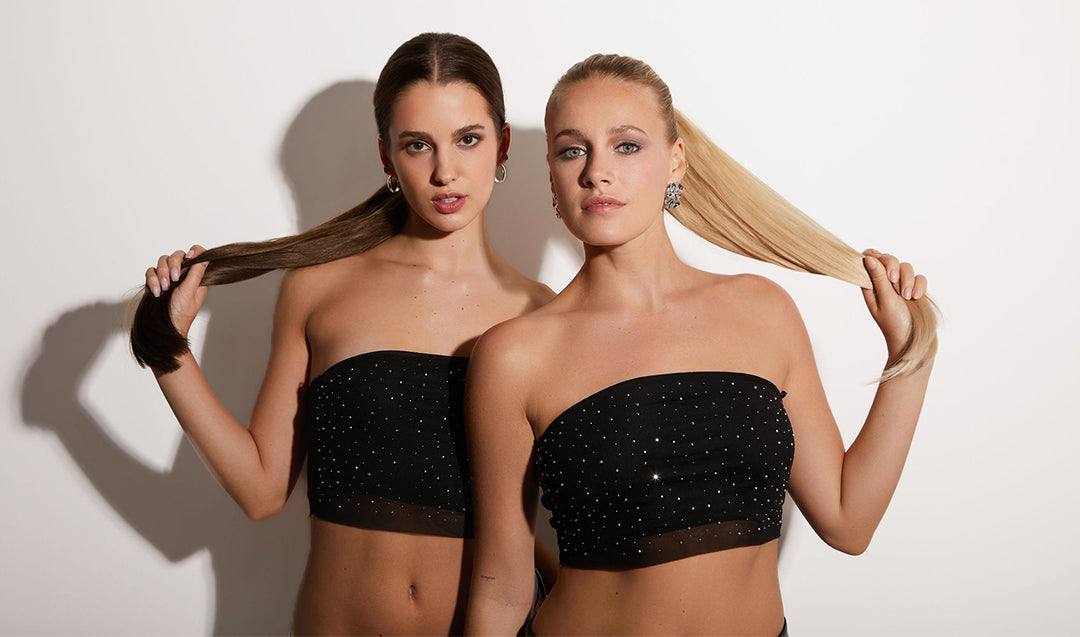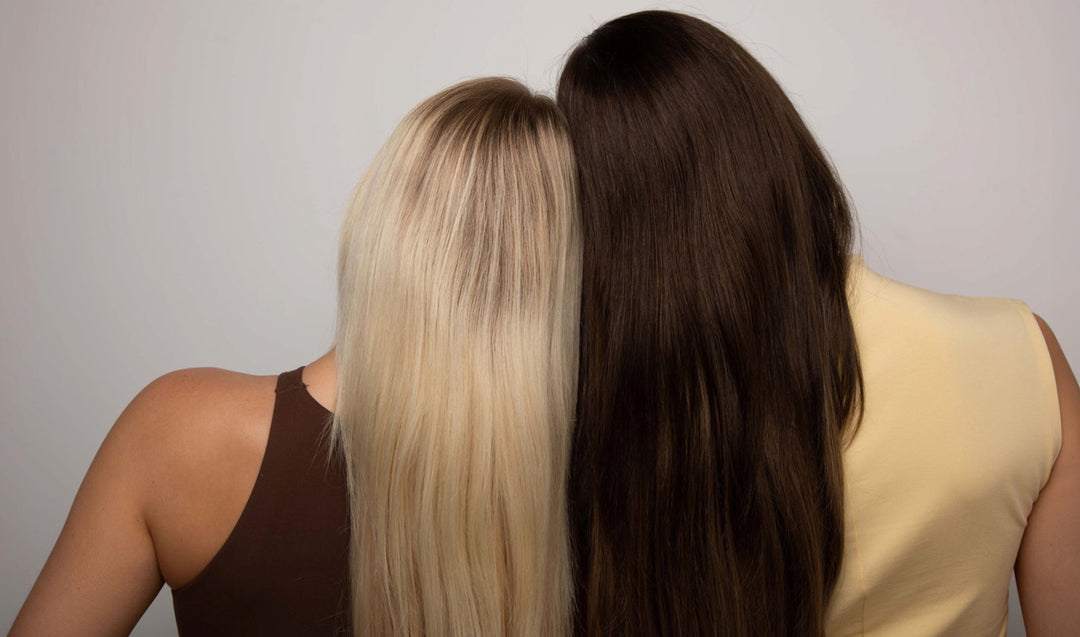Hair extensions can instantly give you the long, luscious locks you've always wanted. But have you ever wondered where all that extra hair comes from? It's an important question to think about before getting extensions.
Picture walking into a salon with bundles of hair in every texture and color imaginable. It's like something out of a fairy tale! But where does all that hair really come from? Behind the magic, there's a whole supply chain that brings in real human hair from various places around the world. You'll want to know the sources - otherwise you could end up with extensions made from hair collected from...funerals (yikes!). Just like that character from that western show who got terrible headaches.
In this guide, we'll pull back the curtain and reveal the truth about the hair extension industry.
Key Takeaways
-
Hair extensions are made from real human hair, often sourced from India, China, and Russia. The good quality hair is sorted and used.
-
Choose ethical brands that pay fair wages and have good working conditions for hair providers. Look for transparency about their sourcing.
-
Human hair extensions look and style better than synthetic. They can be treated like your natural hair but require proper care.
-
Match the texture to your hair type for blending. Consider length, style (clip-ins for temporary use, sewn-in for longer wear).
Different Types of Hair Extensions
Hair extensions are a great way to switch up a person's head and get your look and get longer, thicker, or different colored hair without waiting for it to grow out. There are two main types - synthetic and human hair extensions.
Synthetic extensions are made from man-made fibers like nylon or polyester. They're usually cheaper than human hair, but may not look as natural or be as easy to style. Think of them as a fun, temporary change if you're on a budget.
Human hair extensions are made from real human hair, so they look like your own hair. You can curl, straighten, and color them however you want. The downside is they tend to be more expensive.
There are a few different methods for putting in human hair extensions:
Clip-ins are super easy and temporary. You just clip little wefts or rows of hair onto your own hair for getting a long hair or highlights when you want them.
Tape-ins use little adhesive strips to basically tape wefts of hair onto your head. They last several weeks before needing to be re-taped.
Weaves get sewn or braided into your natural hair using wefts or tracks of extensions. They can last months and really maximize length and volume.
Pre-bonded or micro-link extensions use heat or tiny metal beads to attach rows of hair to your head strand-by-strand. Also lasts months for a very full, blended look.
Sources of Human Hair Extensions

A big chunk of the collected hair used for wigs and extensions comes from Asian hair. In India, there's a China is another major supplier of human hair for extensions. Human hair trade collects hair directly from the Chinese population to be exported.
Statistics show that Hong Kong is actually the largest exporter of human hair extensions globally at around 52% of the market share. India comes in second at around 32.5%. So chances are high that if you buy human hair extensions, they originated in one of those two countries.
If the extensions are labeled as "Remy" hair, you can be sure they came from an Asian source and may be a Brazilian or Indian hair. Remy refers to hair where the cuticles are kept intact and running in the same direction for a smoother look.
Other sources may come from:
-
Donated Hair
Some hair extensions come from people who willingly donate their hair, either for religious reasons or just to help others out. This donated hair is often seen as an ethical source. If the hair is well-maintained and long, it can be really high-quality too. The downside is you can't always predict how much donated hair will be available or what condition it will be in.
-
Ethically Sourced Hair
A lot of extension companies claim to use "ethically sourced" hair, but it's not always clearly defined what that means. Ideally, it means the people providing the hair were paid fair wages and had good working conditions. Companies like Roxy Hair try to be really transparent about following ethical practices and getting certifications. But you have to do your research, as ethical claims can sometimes be vague..
-
Hair Traders
Then there are hair traders who collect and sell hair, which gets into some iffy ethical territory. They might buy hair directly from individuals or go through brokers in the unregulated hair extensions market. But the prices paid to the original hair providers and their working situations can vary a lot and potentially be exploitative in some cases. It's a complicated area.
Hair Extension Manufacturing Process
Here's a look at how human hair extensions are typically manufactured:
-
Collecting and Sorting Hair
The process begins by sourcing human hair from various suppliers like donation centers or individuals selling their hair. This hair is meticulously sorted based on qualities like texture, color, and overall condition to ensure a natural-looking final product.
-
Processing and Cleaning
After the hair is sorted, it goes through a careful cleaning process. The hair is washed without any iron to keep it from getting damaged. Special keratin treatments are used to help condition and moisturize the hair. The hair is washed by hand to be extra gentle with it.
After the washing and treatments, the hair is left to air dry naturally. Drying it with heat can cause damage and make the hair less smooth and shiny. Air drying helps keep the hair in good condition and looking its best.
-
Dyeing and Styling
Sometimes the hair needs to be dyed so all the bundles match in color. This is done very carefully so the hair doesn't get damaged.
After dyeing, trained hair stylists gently style the hair into different textures like curly, straight, or wavy styles. They work slowly and patiently to get the right look.
Finally, the styled hair extensions are clipped, woven, or sewn in so they blend in perfectly with the person's natural hair. The stylists take their time to make sure the extensions look completely natural and seamless.
-
Quality Control
The most important step is carefully checking the hair extensions to make sure they meet high quality standards. Workers look at each bundle very closely.
They check that the hair doesn't shed or fall out too much. They make sure all the bundles weigh about the same amount. They check that the length listed on the packaging is correct. And they look closely at the hair to ensure it is good quality with the cuticles intact and aligned.
Only the hair extensions that pass all these checks and meet the highest quality requirements get packaged up and sent out to be sold. Any bundles that don't look perfect get taken out.

Shop Roxy Hair
Ethical Considerations in Hair Extension Industry
The hair extension business is getting really big these days. As it becomes more popular, companies need to be careful about doing things the right way. There are a few key things to think about.
First, it's important to treat workers fairly and have good labor practices. The hair should come from people who willingly donate or sell it for a fair price. This prevents taking advantage of people, especially in poorer areas where they might feel forced to sell their hair for very little money. Companies should also pay decent wages, have safe working conditions, and not make anyone work against their will.
Second, it's important to think about the environment. Fake hair extensions or non remy hair made from plastic materials don't break down easily, so they add to trash in landfills. Real human hair is renewable, but there are chemicals used in processing it. Companies should try to use eco-friendly dyes and not use too much water when processing the hair.
Lastly, it's important to be respectful of different cultures. Certain hairstyles like afro hair and textures might have special meanings in some cultures. When choosing extensions, companies should offer a diverse range of hair types and textures to cater to all backgrounds. They should be mindful of respecting different cultures and traditions.
Choosing the Right Hair Extensions
With so many options out there, it can feel overwhelming to pick the right ones. Here are some key things to think about:
-
Match the texture of the extensions to your natural hair so they blend seamlessly. If you have fine hair, go for lightweight extensions. Coarser hair? Thicker extensions will work better.
-
Extensions come in loads of colors. You can match your natural shade exactly or get fun by adding highlights or an ombre effect.
-
Consider how long you want your final look to be and pick extensions that'll get you there. But don't go too long as that can cause pulling and tension on your natural hair.
-
There are different kinds of extensions with pros and cons. Popular choices are clip-ins (temporary, easy), sew-ins (more permanent, needs stylist), and tape-ins (long-lasting but require re-taping).
As for caring for your extensions, proper maintenance is key to making them last:
-
Use a special shampoo and conditioner made for extensions. Don't scrub too hard. Be gentle.
-
Do a deep conditioning treatment regularly. This adds moisture to the extensions so they don't break easily.
-
Use a soft brush and start from the ends, working up.
-
Try not to use too much heat on the extensions as it can damage them. If you do use heat, put a protectant product on first and keep the heat low.
-
Braid or loosely bun extensions at night to stop tangles.
When shopping for extensions, look for ethical, high-quality options:
-
Remy human hair like Roxy Hair has the cuticle intact so it stays smooth and tangle-free.
-
Transparent sourcing from companies with ethical practices.
-
Good reputation with positive reviews.
-
Natural, blendable look when worn.
-
Durable to last a decent amount of time with care.
Summary
Getting hair extensions is a personal choice, but there are some important things to think about. The hair has to come from somewhere, so it's good to know where your extensions are from. A lot of the real human hair comes from places like India and China, either from people donating their hair or selling it themselves. The best thing to do is to pick extensions from companies that treat people fairly, pay proper wages, and are open about where their hair comes from. It's also wise to consider extensions that use human hair rather than synthetic fibers, as real hair blends in better and can be styled just like your own hair. With a little research, you can find high-quality, ethically-sourced extensions that allow you to change your look while supporting good practices. Just be sure to follow the right care steps to make those new extensions last a long time.
Frequently Asked Question (FAQs)
Where does hair for extensions come from?
Most extensions use donated human hair, mainly from India, China, and Russia - collected at temples, salons, or sold directly.
Is all donated hair used for extensions?
No, only the highest quality, chemically untreated strands get used after a strict sorting process.
I heard extensions can come from weird places, is this true?
Definitely not true for reputable brands! They only use ethically sourced donated human hair.
Are synthetic extensions better than human hair?
No, synthetic may be cheaper but human hair blends flawlessly and can be heat styled just like your own locks.
How can I ensure ethical sourcing?
Look for transparency about sourcing and manufacturing. Avoid brands that can't explain where their hair comes from. Fair trade certifications help too.





